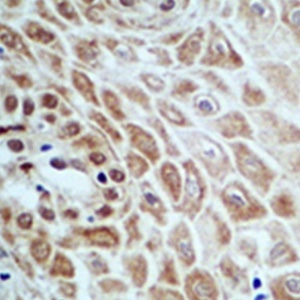Substance P is overexpressed in cervical squamous cell carcinoma and promoted proliferation and invasion of cervical cancer cells in vitro

All claims expressed in this article are solely those of the authors and do not necessarily represent those of their affiliated organizations, or those of the publisher, the editors and the reviewers. Any product that may be evaluated in this article or claim that may be made by its manufacturer is not guaranteed or endorsed by the publisher.
Accepted: 20 July 2023
Authors
This study aimed to investigate the expression and function of substance P in cervical squamous cell carcinoma. Cancer tissues and adjacent tissues of 20 patients with cervical squamous cell carcinoma in our hospital were collected. The expression of substance P was detected by immunohistochemistry and Western blot analysis. Cervical squamous cell carcinoma line SiHa was treated with different concentrations of substance P. The proliferation of SiHa cells was detected by EdU assay, and the invasion ability of SiHa cells was detected by transwell assay. The phosphorylation of ERK1/2 and the expression of MMP9 were detected by Western blot analysis. The results showed that substance P was expressed in the cytoplasm and some cell membranes of cervical squamous cell carcinoma cells. The expression of substance P in cervical cancer tissues was significantly higher than that in the adjacent tissues. Compared with the control group, substance P significantly promoted the proliferation and invasion of SiHa cells in a concentration dependent manner and activated the phosphorylation of ERK1/2 and upregulated the expression of MMP9 in SiHa cells. In conclusion, substance P is highly expressed in cervical squamous cell carcinoma and can promote cervical cancer cell proliferation and invasion. The mechanism is related to the activation of ERK1/2 pathway to upregulate MMP9.
Ethics Approval
This study was approved by the Ethics Committee of the Fourth Hospital of Hebei Medical University (approval no. 20190312).Supporting Agencies
Hebei Province Medical Science Research Project ProgramHow to Cite

This work is licensed under a Creative Commons Attribution-NonCommercial 4.0 International License.









